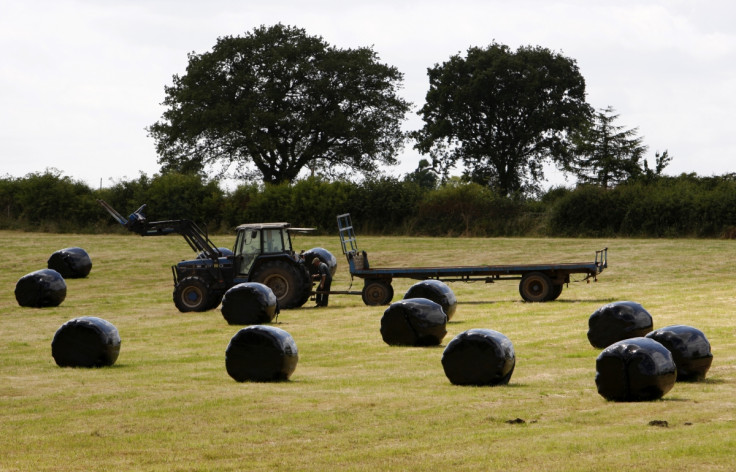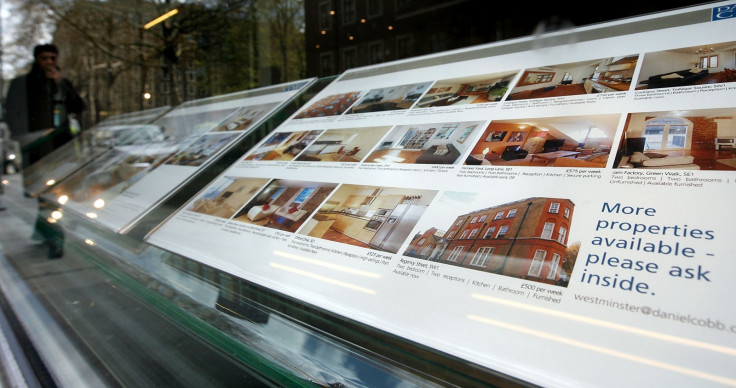Only building on Britain's green belt will solve the housing crisis

England's housing crisis is obvious to anyone moving flat or trying to buy a house in the south of the country. Prices are high and quality is not. The simple reason for this being that we aren't building enough houses, let alone enough in places people actually want to live. The biggest culprit here is the green belt. And there is a simple solution to the problem: build on the damn thing.
Housing minister Brandon Lewis announced on M21 September a new target for Britain to build one million new homes by 2020, or between 200,000 and 250,000 per year. That's nice, but it won't happen. Governments of all kinds are fond of targets but less so of doing anything about them.
Back in 2007, the Labour government pledged to build three million new homes by 2020, at a rate of 240,000 a year. But home-building numbers actually fell after that and haven't risen since. We're not just trying to keep up with rising demand, we're trying to make up a shortfall. The London School of Economic's Paul Cheshire says that since the early 1980s we underbuilt by between 1.6m and 2.3m homes.
Much of the green belt doesn't provide amenity to anyone who doesn't live there already, it's bad for the environment, and it makes housing cripplingly expensive.
The problem is not just the number we're building, but where we're building them – twice as many were built in Doncaster and Barnsley as in prosperous Oxford and Cambridge in the years between 2008 and 2013.
House prices are much higher and rising more quickly than the national average in the south-east of the country, especially London. Compared to a national average rise in prices of of 4.6% in the year to July 2015, prices rose in the east by 8.9%, in London by 8.3% and in the south-east by 8.2%.
The average house in Britain was sold for £183,861; the average London house was sold for £488,782. It isn't that bricks, mortar or labour are much more expensive in these places. It's that demand is high and supply cannot keep up because land we can build on is in such short supply.
But we're not out of space. Only two members of the EU (Cyprus and the Netherlands) have less built environment per capita than Britain and according to the last National Ecosystem Assessment, less than 2.3% of England is built on (a considerably larger part – another 8% or so – is covered with gardens and parks).
It's because most of the empty land we've got around our cities simply can't be built on because of the green belt. The green belt was initially conceived after the war as a way of preventing "ribbon developments" – those stretches of towns along busy main roads that are cheap to build and convenient to live in, but not especially nice or pretty – and of protecting some countryside from urban sprawl for environmental and amenity purposes.
We protect all sorts of land from development – parks, Areas of Outstanding Natural Beauty (AONB) and Sites of Special Scientific Interest (SSSI) – but, as blogger Barney Stringer points out, green belts are the only kind of land that we "protect" because of its location without respect to what the land is actually like.
That means that much of the protected land close to cities like London and Birmingham is actually not very nice or good for the environment. Some 37% of London's, 39% of Birmingham's and 74% of Cambridge's green belts are intensive farmland, which because they are usually monocultures (endless fields of rape, say) are considered to be environmentally worse than doing nothing at all with the land.

Since one of the main justifications for the green belt is that it is environmentally friendly, this looks like a problem. We don't need this land for food. We import about half the food we eat already, and could cheaply import more if need be. We can't import houses.
The green belt gives us agricultural monocultures that most of us visit once a year or less; cheaper land would give us gardens and parks within walk of our homes. The question ought not to be whether we want green space, but where we want it.
Most people think land banking by developers is the problem. Actually, only 4% of sites with planning permission are not currently being developed. But even if this did become a bigger problem, it would only be possible because the supply of developable land is all but fixed.
The answers from the right and left to these problems have been laughable. The Conservatives have probably made the problem worse by driving up demand with policies like Help to Buy, although I am unconvinced by Shelter's widely-reported research claiming that Help to Buy has raised average house prices by nearly 3%.
The left uses the housing crisis to call for more council houses to be built, even though the sort of money that would be required to make a dent in the housing shortage would make Jeremy Corbyn's eyes water. Not only that, but when you actually ask people where they'd want to live, virtually nobody actually says they want to live in a council house.
Most people would like to own their own home, if they could afford it. Building more densely in cities is often favoured by young twentysomethings who don't have children, but most people who are buying houses want low-density – a garden and a semi in the suburbs.
Those are exactly the sorts of houses that are not being built in great enough quantities. More houses of any kind would reduce prices to some extent, but to really fix the problem we need to build the types of houses that most buyers want, in places they want to live.
By freeing up green belt land the supply of housing could grow enough to let prices fall considerably. All of this would actually require very little green belt land to be built on – less than 1.5% of it would give us the space we'd need to build an extra 1.4 million new homes. We could build one million homes around London on just 3.7% of the capital's green belt.
Could the private sector do it? It already has – during the 1930s housing boom, private construction rose from 133,000 houses per year in 1934-45 to 279,000, in just one year – and these houses were affordable. If you come, they will built it.
The cost of extra infrastructure could be more than covered by capturing "planning gain", with the government buying green belt land, reclassifying it and selling it at the market rate to the private sector, keeping the gains for itself.
Trimming the edges of the green belt would suffice, but I'd like to go further. Much of the countryside is worth protecting, but much of the green belt itself is not. It doesn't provide amenity to anyone who doesn't live there already, it's bad for the environment, and it makes housing cripplingly expensive.
We should only protect what's actually valuable. The government's housing targets are worthless unless it frees up land to build on. The green belt myth has to die, and the green belt as we know it has to go.
Sam Bowman is deputy director of the Adam Smith Institute, a libertarian think tank.
© Copyright IBTimes 2025. All rights reserved.






















